“Strip . . . Strip . . . Strip . . . Strike! Set the hook!” exclaimed my guide Argelio in his polite but urgent manner. The water exploded with a silver flash as the tarpon took my fly and smoked my thumb. He made a screaming run, a couple more jumps, and then slowly surrendered to the constant pressure of my Loop 10-weight fly rod and reel.
We were fishing Cuba’s Jardines de la Reina, an archipelago on the south side of Cuba. Jardines de la Reina was named by Christopher Columbus for Queen Isabella of Spain and was one of Castro’s favorite diving and fishing grounds. The 840-square-mile area has more than 600 islands and was set aside as a preserve in 1996. Only a few fishermen and divers are allowed to visit annually and experience its beauty.
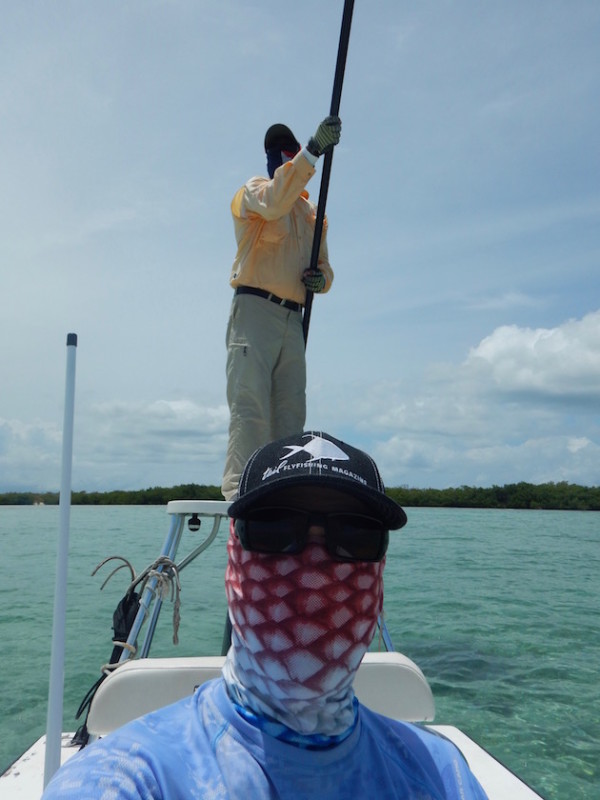
Guide Argelio poles Alan Jackson around the Cuban flats.
A friend, Alan Jackson, has been telling me for years about his fly fishing experiences in Cuba. Several months ago, I finally took the fly and committed to joining his group in 2016.
Shortly after arriving in Havana, while standing in line to change money, I realized that the pace of life in Cuba is much slower than I am used to. The people we met were very nice and welcomed us warmly. They live a simple lifestyle and make do with what they have.
The patience of the Cubans assisting us, and a mojito or two, helped me become acclimated. Havana has a few nice hotels to help you decompress after you arrive as well.
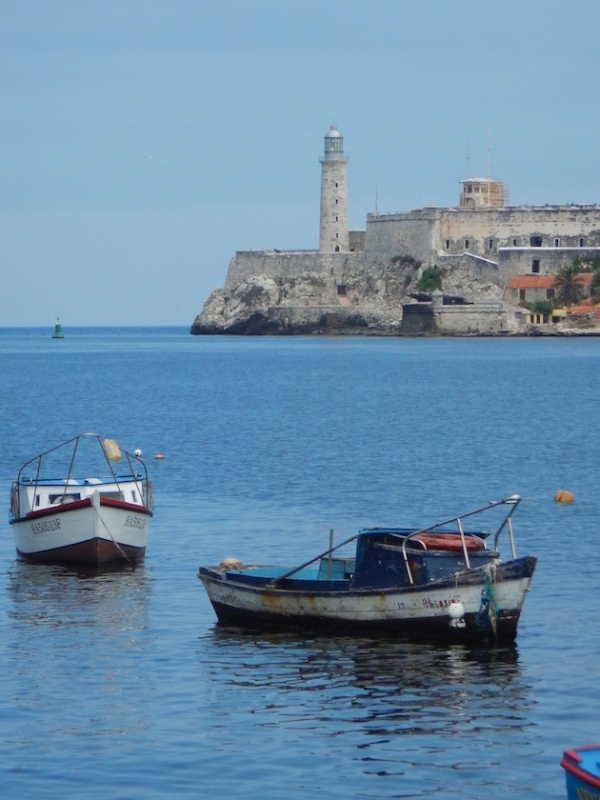
The Castillo de los Tres Reyes del Morro stands watch over Havana Harbor and two of her boats.
We met the other anglers—Jimmy and Charlie Cassidy and Erik Olsen—then headed off to see the sites.
The architecture and old cars are amazing; some of the famous old cars were pristine, while others were brush-painted and far from original. Ironically, as we took pictures of the vintage autos, I noticed a Cuban taking a picture of a new Chevy Silverado. We also saw a couple Edsels that were monuments to the resourcefulness of the Cuban people.
We visited the mecca of fishing and literature, of course: Ernest Hemingway’s home, Finca Vigía, and his boat, Pilar, a beautifully restored 38-foot Wheeler. His house looks like he was just there. Then we toured the Hotel Nacional, a landmark in Havana that was built in the 1930s. While viewing the architecture and the photos of famous people that have stayed there, we really got the feeling of what Cuba was like in the “Golden Years.”
As a treat one evening, we were able to share libations and a meal in the home of Cuban family friends of Alan’s. It was an introduction to authentic Cuban family life and food. We were served chicken, pork, fried plantains, and a fritter made from the malanga root. Every meal was polished off with incredibly delicious, and incredibly strong, Cuban coffee.

Younger tarpon inhabit the shallows of the mangrove forests, while larger, more mature fish can be found in deeper water.
We made a 3 a.m. departure from the hotel by bus for the trek south and east towards the fishing grounds. Rural Cuba is really a leap back in time. Transportation is by horse and buggy or an ancient Russian tractor pulling a wagon. We saw farmers guiding their oxen and plows as they cultivated their fields.
We boarded our mothership at the port in Jucaro shortly before noon. The Halcon, our home for the week of fishing, is a well-maintained 75-foot motor yacht that was built in the ’60s. She once belonged to Robert Vesco as he bounced around Cuba and Central America trying to avoid extradition to the U.S. We wondered if any of the $200 million that he left the U.S. with was stashed away somewhere onboard.
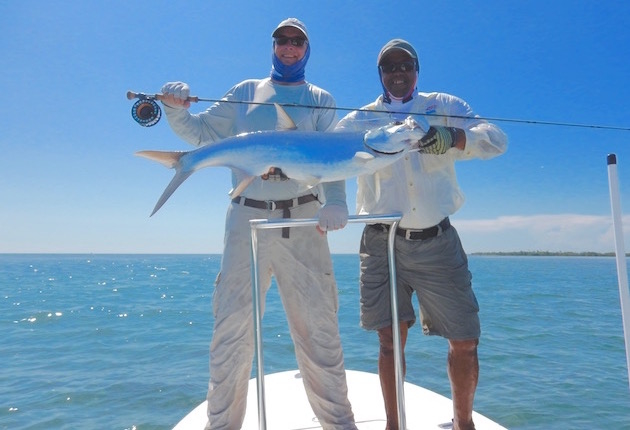
The author and his guide Argelio with a feisty Cuban tarpon.
We five anglers and the six crew members and guides made the six-hour trip out to the islands to pick up our skiffs and start fishing. We spent the time rigging our fly rods in anticipation of the coming week.
We fished from sturdy 16-foot Dolphin skiffs. We were targeting tarpon, bonefish, permit, and snook, but often caught jacks and snapper as well. We were fighting tarpon soon after we wet our lines. We caught bonefish from the boat and while wading.
The permit, however, were elusive. We had several shots at them but just couldn’t seal the deal. The snook . . . well, I’m saving them for next year.
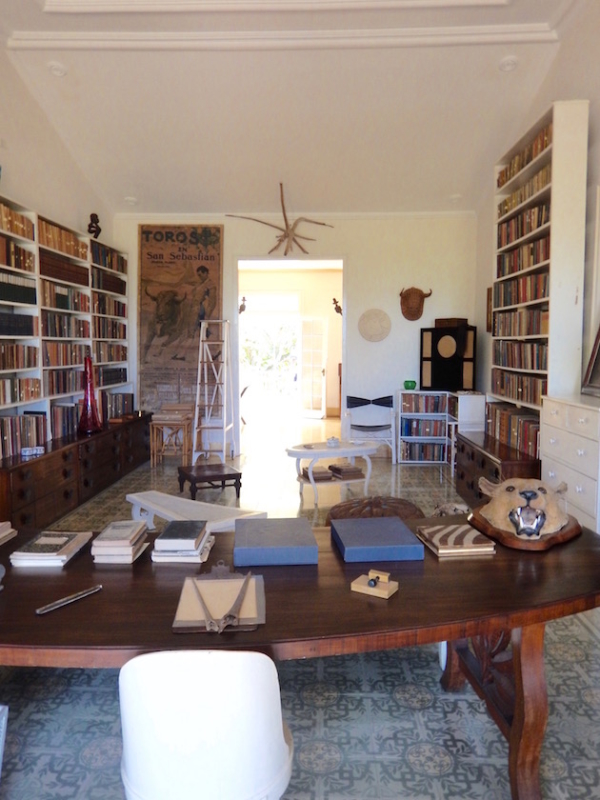
Hemingway’s Finca Vigia looks like Papa just stepped out the door and will be right back.
Whether you’re wading the flats for bonefish, exploring the mangroves to find schools of juvenile tarpon, or waiting for the larger tarpon to make their daily journey around a point, you are casting to fish that have probably never seen a fly. The guides were very experienced and expertly navigated the waters without the help of modern navigational tools, or compasses for that matter. They were helpful in choosing flies and showing us techniques that always seemed to work.
Each day started shortly after sunrise with a big breakfast on the aft deck of the Halcon, then a quick step over to and aboard the skiffs for a day of fishing. We either returned to the mothership for lunch or packed our own. During our lunches on the beach, we were welcomed by iguanas and hutias looking for a handout. Hutias are large rodents that live in the mangroves. They were friendly and would eat out of our hands.
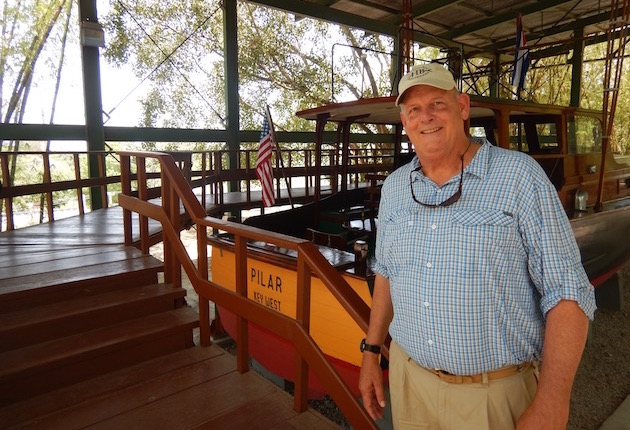
The author stands next to one of the most famous boats in history, Hemingway’s Pilar.
The evenings were occupied with a delicious dinner of fresh local fish and lobster, Cuban cigars and rum, and many fishing stories to exchange. We had the exclusive use of hundreds of square miles of flats and mangroves. The weather was perfect all week, and we were far enough from the mainland to avoid the afternoon thunderstorms. There tended to be a slight breeze in the morning which flattened out to mirror calm in the late afternoon. It was just the opposite of what I am used to in the Southeast U.S.
After returning to the mainland for the trek towards home, we said our goodbyes to our new friends onboard the Halcon, and I immediately began plotting my course for a return trip to the Jardines.

